FGF-Max (Recombinant human FGF-1/FGF-2 chimera)
The chimeric protein “FGF-Max” is not only a universal FGFR ligand as FGF-1, but also shows the high thermal stability. The special characteristics make it a novel and attractive choice for organoid cultures.
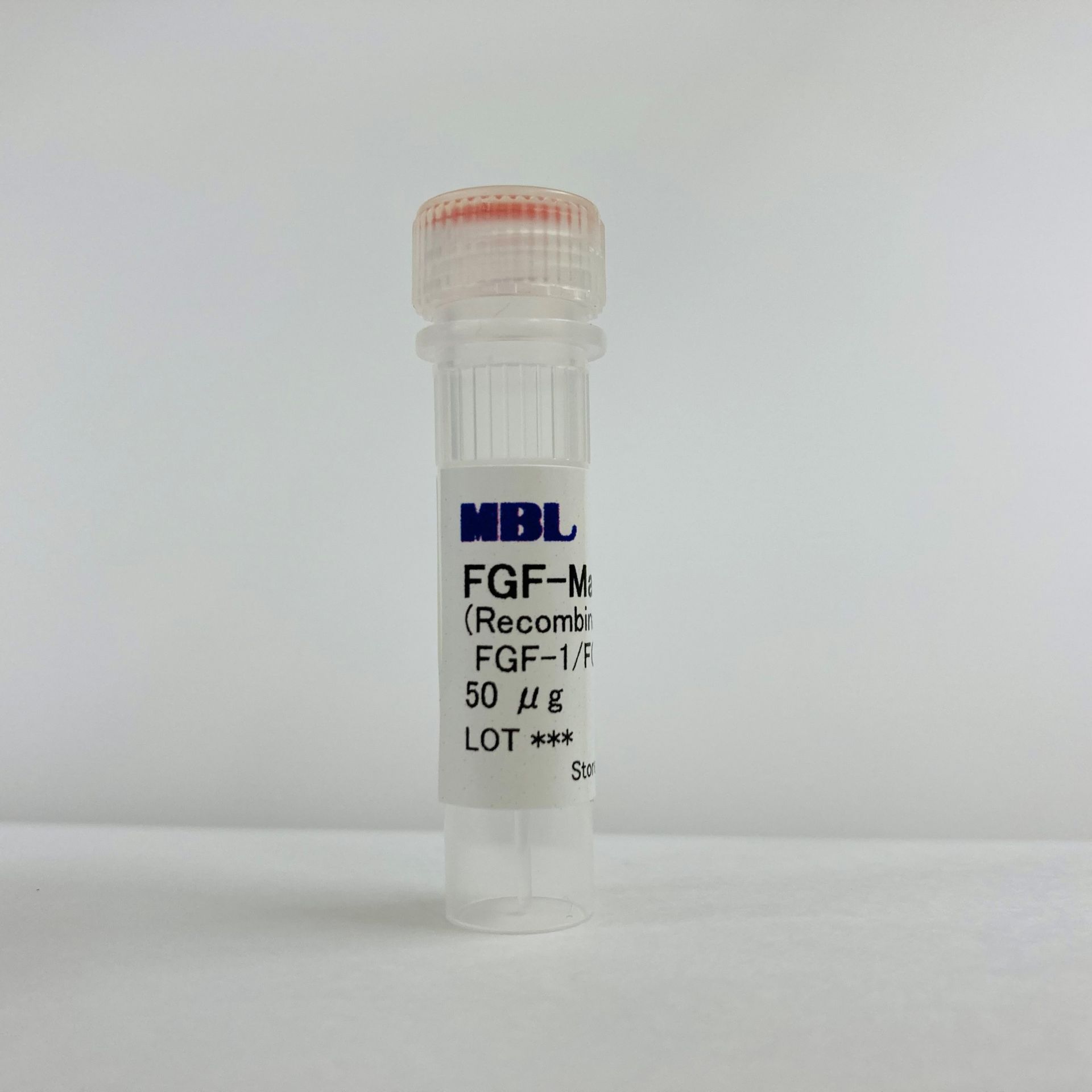
What is FGF-Max?
The family of fibroblast growth factors (FGFs) are composed of the growth factors involved in a variety of vital phenomena, including development, differentiation, proliferation, and morphogenesis. FGF-1~FGF-10 transmits signals into cells by binding to the FGF receptor (FGFR). Previous publications have suggested the FGF/FGFR signaling pathway is deeply involved in many processes from embryonic development to adult homeostasis.
Activation of FGF/FGFR signaling pathway is also known to be important in organoid cultures. However, proper selection of different FGFR ligands for each organ type is necessary while organoid culture, complicating experimental set up and execution. Therefore, using the universal FGFR ligand ”FGF-1”, which shows highly affinity to all the type of FGFR, is expected to be a simple and convenient method for organoid culture. However, FGF-1 is known to be thermally unstable, and at 37 °C, which cell-culture is normally being held, the bio-activity is lost within 6 hours, including in the presence of heparin. These factors results in commercially available FGF1 being unable to be used in culture studies.
To solve the problem, MBL enhanced the thermal stability of universal FGFR ligand “FGF-1” by chimerizing FGF-1 and FGF-2 and developed FGF-Max, a recombinant chimeric protein with features of both FGF-1 and FGF-2.
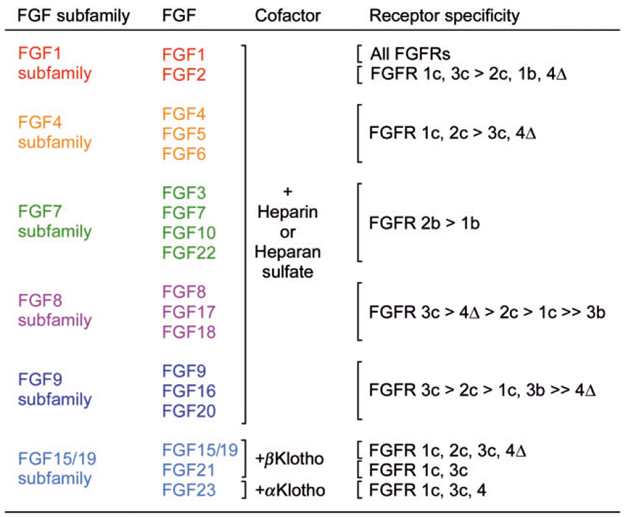
Assay and organoid culture examples using FGF Max
Quantitative luciferase reporter assay
A luciferase reporter assay (SRE Reporter, Luciferase, HEK293 Cell Line: BPS Bioscience) was performed to assess the activity, and stability of FGF-Max.
Comparing with FGF-2
FGF-Max and FGF-2 (commercially available products) were added to the cells at different concentration and cultured for 6 h. The result shows that FGF-Max has the bio-activity in the same level with FGF-2.
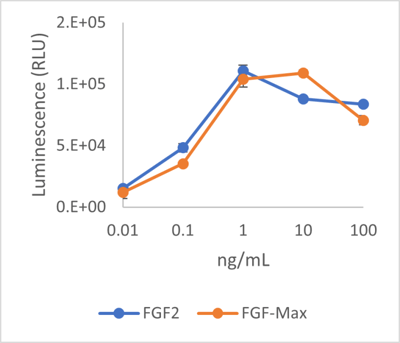
Thermal stability evaluation
After pre-incubation of FGF-Max and FGF-2 (commercially available product) at 37°C for 24 h, 48 h, and 72 h, they were added to the cells for bio-activity assessment. The results suggested that FGF-Max retained higher bio-activity after pre-incubation compared to FGF-2 which also proves that FGF-Max has higher thermostability than FGF-2.

Human small intestinal organoid cultures
Human small intestinal organoids were cultured in the presence of FGF-Max and FGF-2 (commercially available product). It was suggested that proliferation of organoids is higher in the presence of FGF-Max than FGF-2.
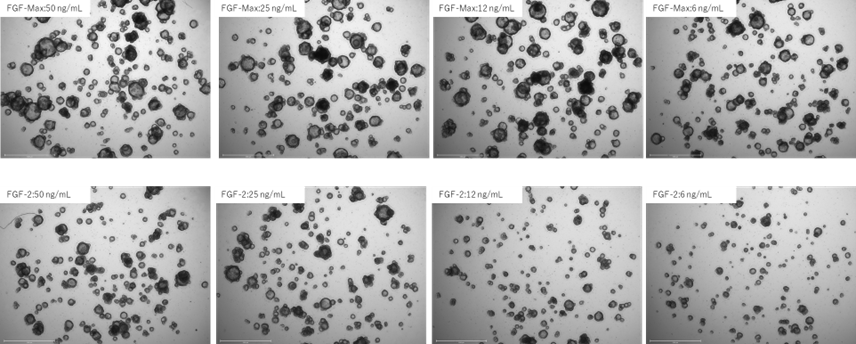
Differentiation of human small intestinal organoids.
Paneth cell, endocrine cell, and goblet cell markers of human small intestinal organoids cultured in the presence of FGF-Max (4 ng/mL) were stained. The presence of Paneth cells, and differentiated endocrine cells and goblet cells in organoids was confirmed.
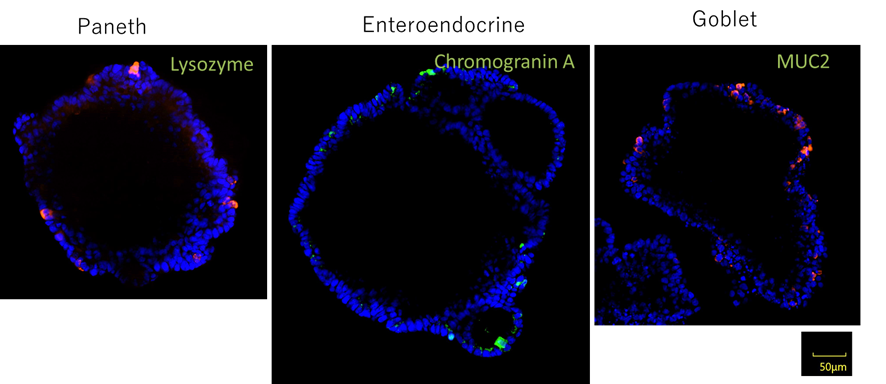
Establishment of mouse gastric organoids.
Murine gastric organoids were cultured in the presence of FGF-Max and FGF-10 (commercially available product). Similar to human small intestinal organoids, it was suggested that proliferation of organoids is higher in the presence of FGF-Max.
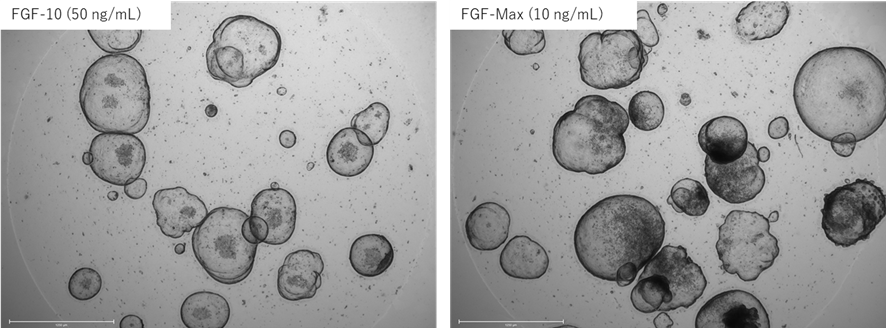
ATP assay
ATP-assay results also suggested that the cell viability in organoid is higher with the presence of FGF-Max.
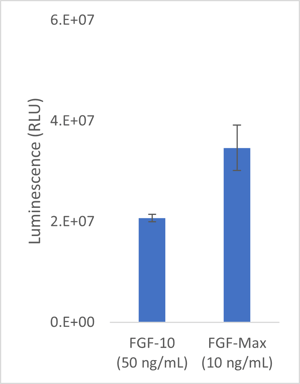
Establishment of mouse pancreatic organoids
Murine pancreatic organoids were cultured in the presence of FGF-Max and FGF-10 (commercially available product). Similar to the above results, it was suggested that proliferation of organoids is higher in the presence of FGF-Max.
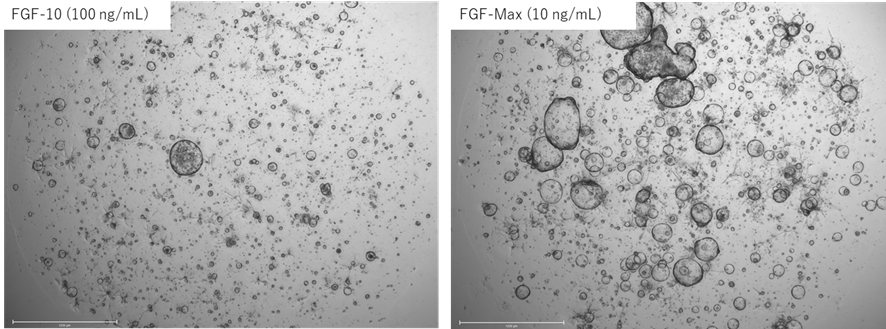
Product Highlight
| Product Code | Product Name | Formulation | Size |
|---|---|---|---|
| J2-003 | FGF-Max (Recombinant human FGF-1/FGF-2 chimera) | Lyophilized from 20 mM Tris-HCl (pH7.4) containing 0.5 M NaCl and 1% Trehalose. | 50 µg |
Bulk quantities available! Contact us for any special requests.
If you are to use this product in combination with other factor or factors (hereunder factors) when culturing organoids, stem cells, or other tissues, a third party may have a patent on the use or other application of the factors concerned.
Regarding this product, we do not offer any non-infringement warranty when used or otherwise applied in combination with other factors. Therefore, if you intend to use this product in combination with other factors, please check with your organization’s division responsible for intellectual property rights or your research agency before using this product.